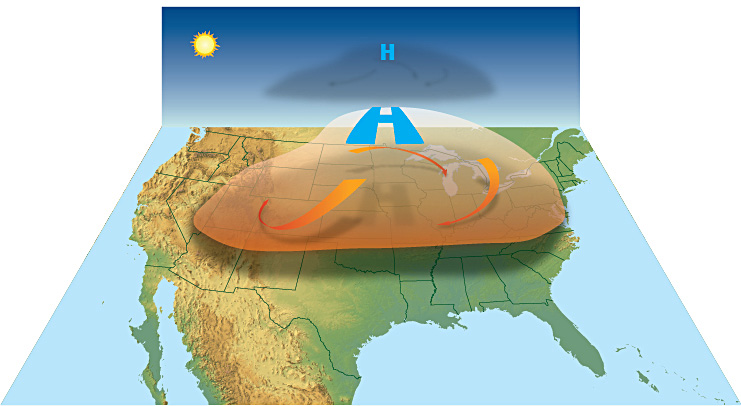Dangerous Heat
For some, a heat wave might sound like an excuse to run around with a hose or into some sprinklers. In reality, though, heat waves are no laughing matter. They are serious weather phenomena that can be quite dangerous.

Heat anomalies from June 17-24, 2012. The more red an area appears, the more above average the temperatures were during that time.
You see, there’s hot and then there’s HOT. One example of a HOT time was in late June and early July 2012 in the United States. During that time period, more than 8,000 warm temperature records were broken or tied. Many of these records had been unchallenged since the 1930s. Roads actually buckled in Chicago. Many deaths were attributed to the heat nationwide.
How Do Heat Waves Form?
Heat waves are generally the result of trapped air. During the 2012 heat wave, air was trapped above much of North America for a long period of time. As opposed to cycling around the globe, it simply stayed put and warmed like the air inside an oven.
The culprit? A high-pressure system from Mexico. Between June 20th and June 23rd, this system migrated north. It grew in size, and it parked itself over the Great Plains of the United States.
High-pressure systems force air downward. This force prevents air near the ground from rising. The sinking air acts like a cap. It traps warm ground air in place. Without rising air, there was no rain, and nothing to prevent the hot air from getting hotter.

High-pressure systems can create a 'cap' that traps air in one place as it warms. This can lead to a heat wave. Credit: National Weather Service
But that wasn’t all. A weather pattern that normally pulls air toward the east was also weaker at the time. That meant that there was little that could be done to push this high-pressure cap out of the way.
Heat Wave Safety
Heat waves like this may be less exciting or dramatic than other natural disasters like tornados, hurricanes, flooding, or even thunderstorms, but heat waves kill more people in the United States than all other weather-related disasters combined.
Check out the sidebar to learn more about what you can do to stay safe!




